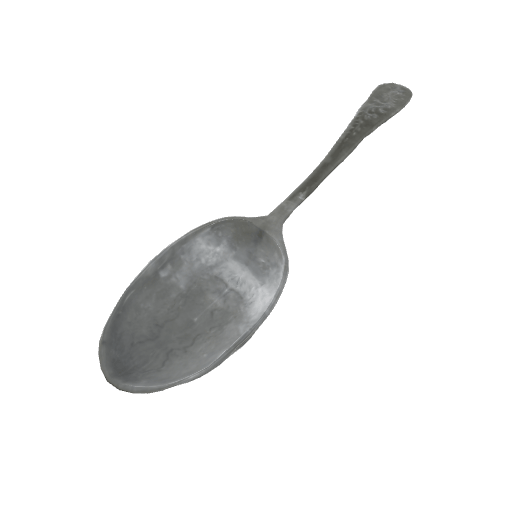Spoon
This tin spoon is used for serving and eating food. Along with knives, these are the most common eating utensils. Forks were only gradually introduced to the West in the 17th century.
Having a specific weight, it can also be used as a reference on a scale. Its monetary value is defined by its weight. Sturdy, heavy, and rather massive, spoons are generally made of iron, tin, or even silver in wealthier households. These materials can easily be remelted and remoulded when the utensil is broken. During the summer, the spoon maker goes from village to village to accomplish this job. Otherwise, it is possible to maintain the cutlery by visiting the tinsmith, a craftsperson who specializes in working with tin.
It is not uncommon for households to have their own moulds to make ornamented or unadorned spoons. This one has plant and floral designs on its handle. To make a cast-iron spoon, the different metals making up the alloy are put together. The alloy is then melted on the forge’s fires. The molten metal is then poured into the moulds and released to cool. The casting residue is removed, and the spoons are scraped and polished.
References
Date: 19th century
Origin: North America
Owner: Site historique de la maison Lamontagne.
Sources:
Pointe-à-Callière, cité d’archéologie et d’histoire de Montréal. (n.d.). Cuillère [Spoon]. ARCHÉOLAB.QUÉBEC. Retrieved July 14, 2022, from https://www.archeolab.quebec/recherche/objet/208263
Tremblay, Y. (1996). Les ustensiles, les objets de couture et le luminaire de Place-Royale [The utensils, sewing items, and lighting of Place-Royale] (Patrimoines: Dossiers, vol. 96, pp. 164–234). Publications du Québec.
